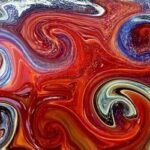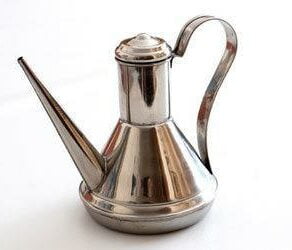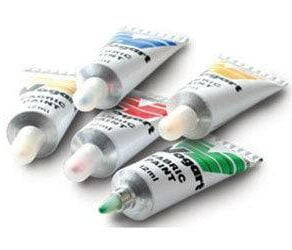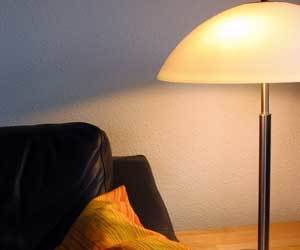Table of Contents:
Although you can remove light dust, airborne pet hair, and even soot from an oil painting yourself, a deeper, more thorough cleaning should always be left to a professional. As long as the painting isn’t damaged, however, you can prolong the life of your oil painting with these easy maintenance steps.
you can remove light dust, airborne pet hair, and even soot from an oil painting yourself, a deeper, more thorough cleaning should always be left to a professional. As long as the painting isn’t damaged, however, you can prolong the life of your oil painting with these easy maintenance steps.
You Will Need:
- Soft brush
- Compressed air
- Fresh white bread
Steps to Remove the Dust:
- While the painting is in the vertical position, gently go over it with a soft brush to remove loose debris. Work from the top down and from side to side in a consistent motion.
- If the painting is very dirty, use canned air for thorough cleaning. This should be sufficient to remove most stubborn hair and dust. Follow the instructions on the can of product that you choose; most of these products will require you to hold the can at an angle several inches away from the surface of the painting. Keep in mind that this could be too strong for your painting and accidentally chip the paint or dislodge a tip from a brush stroke.
- If the painting is still dirty or has smoke residue on it, it would be best to have it professionally restored. However, there is a home remedy that you can try if professional restoration is not possible. To do that, lay the painting on a horizontal sturdy surface.
- Remove the crust from a piece of soft white bread.
- Press the bread to the surface to get rid of the smoke residue, or any remaining hair or stubborn dust. Lift and repeat. Replace bread with a fresh piece when it’s soiled.
- Stand the painting up and repeat step one to remove any lingering crumbs or remaining debris.
Additional Tips and Advice
- If you desire a deeper clean, you can purchase an art restoration kit from an art supply store. Follow the directions carefully, and clean at your own risk! If the painting has value, it’s always worth the investment to have it cleaned properly by a professional.
- Avoid introducing moisture to the surface of your painting. It can seep inside invisible cracks and cause damage.
- Do not attempt to clean a damaged painting.
- Do not use a feather duster or dusting cloth to clean an oil painting, as they can leave scratches or push the dirt into the painting.
Sources
- Saving Stuff by Don Williams
- Fix It, Clean It, and Make It Last by Gayle K. Wood









If it’s a good oil painting, one that’s worth money or means something special to you, have it cleaned by a professional. It will cost a lot of money to have the painting cleaned, but you can just destroy a nice painting if you try to clean it without knowing what you’re doing.
Water or water-based cleaning solutions will make the paint crack and flake off. If you have to clean the painting, use a cleaning solution that’s made just for cleaning oil paintings and follow the directions really carefully.
You can use a soft paintbrush or even an old toothbrush to brush dirt or dust off of a painting. You can also use the tip of a soft cloth as long as it’s smooth.
They sell cleaning products for oil paintings at craft and hobby stores. Most of these cleaners are for removing yellowed varnish from a painting. You apply the solution with a cotton swab a little bit at a time, being really careful not to press too hard or let the emulsion pool up and make the canvas wet. Test the product on your least favorite corner of the painting first, just a tiny little space, in case it makes the paint start to come off of the canvas.
Whoever runs the store will just have to know the best way to clean a dingy oil painting. After all, they have to clean all of the ones they’re going to sell!
Never ever use any cleaning solution because I’m 100 percent sure it will never be the same again since the chemical reaction will affect it. That’s why you will notice they always advise to varnish it precisely because the varnish will cover the imperfection, heh. Not even the most experienced restorer can prevent it, the color will always be disturbed. The pigments will blend with the dirt. The safest way to keep it as good as the first time it left the artists hand is to dust it every 3 months with a very soft dry brush to prevent dust and smoke build up, assuming that it’s already completely dry. The color and condition will always be as good as the first time you took it home.
I recently bought a Thomas Kinkade print. Around the print is what looks like white canvas. If that canvas gets wet, will it discolor the canvas? I wanted to clean a small stain from the unpainted surface.
Latex paint was used to cover an oil painting several years ago. Is there any way to remove the latex without taking off the original oil painting?
I would just like to point out that the conservation of paintings is not a topic that should be taken lightly or be done by a DIY-er. Many problems can arise from a cleaning undertaken by an untrained person, and the conservation of fine art is a profession. The removal of paint and blanching of the surface are some of the many problems which can permanently damage an artwork. Please seek the help of a professional and not a DIY video by someone looking to save a few dollars.
Anyone seeking information on how to find a conservator or restorer of fine art should look at the American Institute for Conservation of Historic and Artistic Works. Alternatively, anyone in Canada should look at the Canadian Association for Conservation. Europeans should check out ICOM-CC.